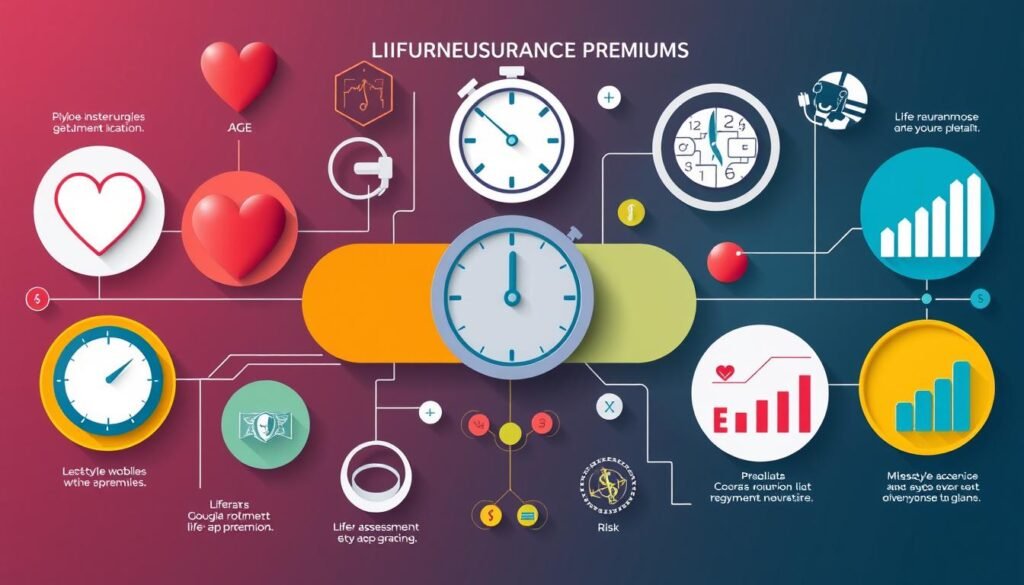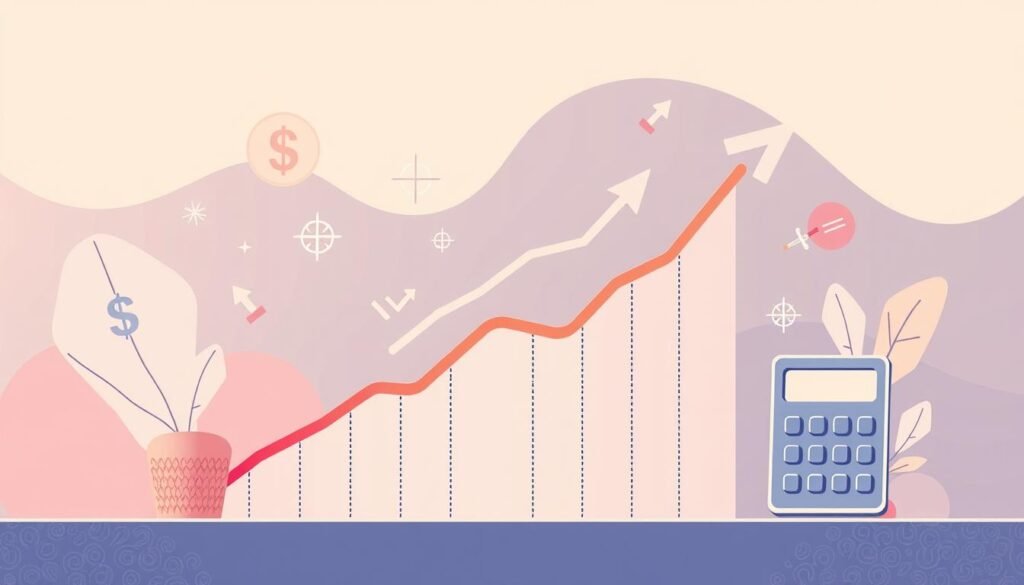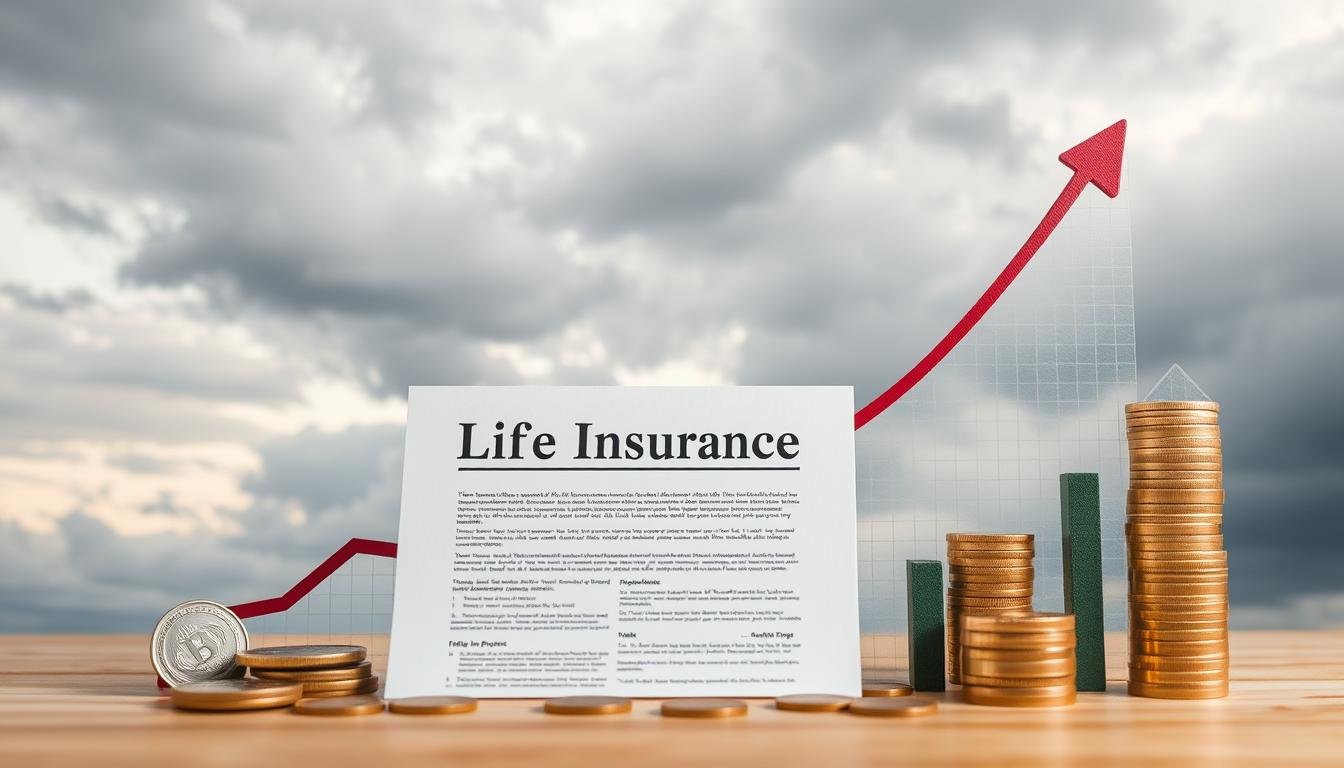Ever wondered why your life insurance premium goes up every year? It’s a common issue for many. We’ll explore the main reasons for this increase and offer tips to grasp this puzzling situation.
Key Takeaways
- Life insurance premiums usually go up as you age because of health risks.
- Insurance companies use lots of data to figure out claim chances, which affects premiums.
- The Consumer Price Index (CPI) and inflation can also raise your life insurance costs.
- Changing your policy coverage can change your annual premiums.
- Knowing the difference between level term and age-rated premiums can help you choose wisely.
Age and Health: Key Factors Influencing Premium Hikes
When you explore life insurance, knowing what affects your rates is key. Your age and health are the biggest factors.
Actuarial Data and Statistical Analysis
Insurance companies use actuarial data and statistical analysis to predict claim likelihood. They look at age and health to set premium hikes. This way, they adjust rates to match the increased risk with age.
For example, life insurance for seniors is available until age 80, with shorter terms. Women usually pay less than men because they live longer. Certain health issues, like high blood pressure or diabetes, can increase life insurance rates.
- Smoking, including tobacco use in various forms, can lead to higher insurance rates.
- Family medical history, such as a history of cancer or cardiovascular disease, impacts life insurance rates.
- Risky occupations and hobbies, like scuba diving or piloting planes, can result in higher premiums.
Knowing these factors affecting life insurance costs helps you make better choices. You can work with your insurer to keep premiums affordable as you age and your health changes.

“The younger and healthier you are when applying for life insurance, the more affordable the rates offered.”
Why did my life insurance premium go up?
Life insurance premiums can go up over time. This is due to several important factors that affect the cost of your coverage.
Your age is a big reason for premium hikes. As you get older, the risk of needing to make a claim goes up. Insurers use data and analysis to set your premium based on your age.
Changes in your health or lifestyle can also raise your costs. If you’ve had a big health change or changed your daily habits, your insurer might see you as a higher risk. This could mean a higher premium for you.
Lastly, making changes to your policy can also increase your premiums. For example, if you increase your coverage or add riders, your rates will likely go up. These changes affect the overall cost of your protection, so insurers adjust your rates.
| Factors Affecting Life Insurance Costs | Impact on Premiums |
|---|---|
| Age | Premiums typically increase as you get older |
| Health Conditions | Worsening health can lead to higher premiums |
| Lifestyle Changes | Risky activities may result in premium increases |
| Policy Adjustments | Increasing coverage often leads to higher premiums |
Knowing what affects life insurance premium increases can help you manage your costs. By staying informed and proactive, you can keep your life insurance policy effective for you and your loved ones.

Cost of Living and the CPI Option
The cost of living keeps going up, and it’s important to keep your life insurance coverage in line. The Consumers Price Index (CPI) tracks the cost of goods and services. It shows how expenses for households are increasing.
Choosing the CPI option for your life insurance policy helps keep its value as inflation goes up. This option adjusts your death benefit every year to match the rising cost of living. It makes sure your loved ones are protected, even when prices are high.
Maintaining Coverage Value with Inflation
Inflation can really affect the value of your life insurance policy over time. Even if you pay your premiums on time, the coverage might not keep up with rising costs. It’s key to review and adjust your policy after big life changes, like buying a home or starting a family.
| Inflation Rate | Impact on Life Insurance Coverage |
|---|---|
| 2-4% (Traditional Rate) | Gradual erosion of coverage value |
| 8% (2022 Average) | Significant reduction in purchasing power |
| 4% (2023 Average) | Continued decline in coverage adequacy |
By linking your life insurance policy to the CPI, you can make sure the death benefit grows with the cost of living. This keeps its value and gives your loved ones the financial security they need, even when inflation is high.

Policy Adjustments and Their Impact
As your life changes, so might your life insurance needs. The coverage amount affects your annual premium. For example, if you’ve paid off big debts, like a mortgage, you might lower your coverage.
On the other hand, if you move to a pricier home, you might need more coverage. This could raise your premium.
It’s key to work with a financial advisor to keep your coverage right. They can guide you through policy changes and their effect on premiums. This way, you can keep your coverage up to date without breaking the bank.
| Policy Change | Impact on Premium |
|---|---|
| Decreasing Coverage | Reduced premium |
| Increasing Coverage | Increased premium |
| Transitioning to a More Expensive Home | Increased premium |
| Paying Off Significant Debts | Reduced premium |
Understanding how policy changes affect your premiums is important. It helps you make choices that fit your changing financial and personal needs.
“Keeping your life insurance coverage up-to-date is crucial as your life circumstances change. Work with a financial advisor to ensure you have the right level of protection at the best possible price.”
Level Term vs. Age-Rated Premiums
Choosing between level term and age-rated premiums in life insurance matters a lot for your future costs. Knowing the differences helps you pick what’s best for your money and safety needs.
A level term life insurance policy has the same premium for 10 to 40 years. This is great for those who like knowing their monthly costs won’t change. But, the first premiums are often higher than age-rated ones.
Age-rated premiums go up every year as you get older. This means your life insurance costs will grow, matching the higher risk of aging. Even though the first premiums are lower, the total cost can rise a lot over time.
| Feature | Level Term | Age-Rated |
|---|---|---|
| Premium Changes | Remain fixed for the policy term | Increase annually as you age |
| Initial Premium Cost | Higher | Lower |
| Long-Term Cost | Predictable and consistent | Can increase significantly over time |
| Suitable for | Individuals seeking stability and predictability in their life insurance costs | Families with tighter budgets or shorter-term coverage needs |
Think about your money, needs, and future goals when picking life insurance. Weighing the good and bad of level term and age-rated premiums helps you choose wisely. This ensures you get the right mix of protection and cost for your family.
Lifestyle Changes and Health Conditions
Your lifestyle and health can greatly affect your life insurance costs. If you get a new health issue or take on risky activities, your rates might go up. But, if you quit smoking or make other healthy changes, your rates could drop.
For example, heart disease, organ transplants, cancer, and smoking can raise your premiums. Jobs that are very dangerous, like being a firefighter or pilot, can also lead to higher costs or even denial of coverage.
What you do in your free time matters too. Activities like mountain climbing or heavy drinking can make you pay more for insurance. So can smoking.
But, living a healthy life can help lower your rates. This includes managing your weight, quitting smoking, and avoiding dangerous activities. Getting life insurance when you’re younger can also save you money.
| Age | Male | Female |
|---|---|---|
| 20 years old | $16.10 | $14.79 |
| 30 years old | $16.10 | $15.01 |
| 40 years old | $18.92 | $17.84 |
| 50 years old | $35.45 | $31.97 |
| 60 years old | $77.43 | $59.60 |
In short, your lifestyle and health can really change how much you pay for life insurance. By understanding these factors and making healthy choices, you can control your costs. This way, you can get the coverage you need without breaking the bank.
Conclusion
There are many reasons why your life insurance premium might go up. Age, health, and the cost of living are just a few. Knowing these factors helps you manage your policy better.
Working with a financial advisor is crucial. They can help you adjust your coverage and find ways to save money. You might need to change your policy or look for better rates.
The insurance world can seem overwhelming. But with the right information and advice, you can handle it. Stay informed and proactive to protect your family’s future. This way, you can find the right balance between coverage and cost.
FAQ
Why did my life insurance premium go up?
Several reasons can cause your life insurance premium to rise. As you get older, the risk of needing to make a claim goes up. Changes in your health or lifestyle can also affect your premium. Lastly, increasing your coverage amount can lead to higher premiums.
What are the key factors influencing premium hikes?
Life insurance premiums often increase with age. This is because older people face a higher risk of illness or death. Insurance companies use data to predict these risks and adjust prices accordingly.
How does the cost of living and CPI impact life insurance premiums?
The cost of living, as shown by the CPI, can influence life insurance premiums. Linking your coverage to the CPI helps keep its value steady against inflation. This way, your insurance keeps pace with rising living costs.
How can policy adjustments impact my life insurance premium?
The amount of coverage you have affects your premium. Paying off debts might mean you need less coverage, lowering your premium. But, if you buy a more expensive home, you might need more coverage, raising your premium. Always consult a financial advisor to ensure your coverage is right for you.
What’s the difference between level term and age-rated life insurance premiums?
Level term policies keep your premium the same for a set period, like a mortgage. They start higher but stay the same. Age-rated premiums, however, increase each year as you get older.
How can lifestyle changes and health conditions impact my life insurance premium?
Changes in your lifestyle or health can change your premium. Getting a new health condition or taking on high-risk activities might raise your premium. But, making healthy lifestyle choices, like quitting smoking, could lower it.
